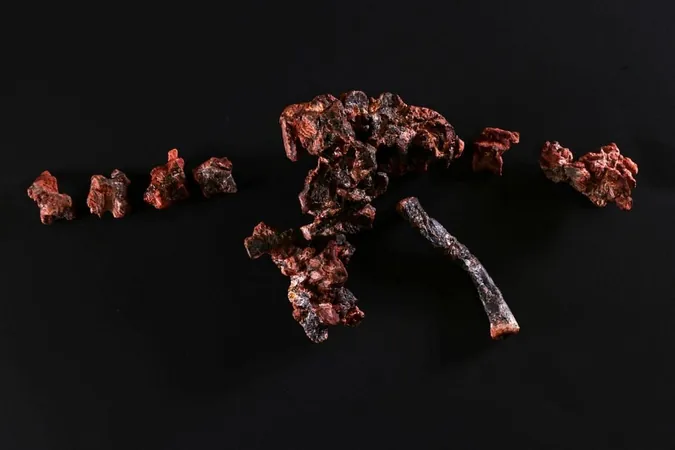
Ancient Reptile Fossil Discovery in Brazil Unlocks Secrets to Dinosaur Evolution
2024-10-14
Author: Sarah
Introduction
In a groundbreaking announcement, scientists in Brazil have uncovered one of the oldest reptile fossils in the world, believed to date back approximately 237 million years. This discovery could provide critical insights into the rise of the dinosaurs, offering a glimpse into a time when these magnificent creatures were beginning to establish dominance on our planet.
Discovery of Gondwanax paraisensis
The newly discovered species, named Gondwanax paraisensis, is a four-legged reptile that measured about one meter in length and weighed between 3 to 6 kilograms—similar in size to a small dog. Its long tail and unique skeletal structure have prompted researchers to classify it as part of the silesaurid family, an ancient lineage of reptiles whose precise evolutionary relationship with dinosaurs remains a topic of active debate among paleontologists.
Location and Significance
The discovery took place in Paraiso do Sul, located in the southern Brazilian state of Rio Grande do Sul, where the fossil was found embedded in a rock layer that dates back to the Triassic period, a crucial time in Earth's history when early mammals, crocodiles, turtles, and frogs began to emerge alongside the first dinosaurs.
The Search for Fossils
Pedro Lucas Porcela Aurelio, a physician and avid fossil enthusiast, stumbled upon the fossil in 2014, and it took several years of research and analysis before the findings were published. "Being the first human to touch something from 237 million years ago is extraordinary," Aurelio stated, reflecting on the significance of the discovery. "It’s an indescribable feeling."
Scientific Insights
Paleontologist Rodrigo Temp Muller, who detailed the study in the scientific journal Gondwana Research, emphasizes the importance of the fossil's age. "This finding is crucial because it provides clues about the conditions that facilitated the evolution of dinosaurs," he explained in an interview. The fossil's remains were initially obscured by a thick layer of rock, showcasing the enduring preservation of ancient life forms.
Naming the Species
The name Gondwanax pays homage to the ancient landmass of Gondwana, which existed in the southern part of the supercontinent Pangaea before continental drift, while “paraisensis” recognizes the town where the fossil was unearthed.
Conclusion
This remarkable discovery not only enriches our understanding of prehistoric life in southern Brazil but also adds a vital piece to the puzzle of how the dinosaurs ultimately came to rise and thrive millions of years ago. As scientists continue to explore this ancient past, we may soon uncover even more secrets about the creatures that once ruled our planet.


 Brasil (PT)
Brasil (PT)
 Canada (EN)
Canada (EN)
 Chile (ES)
Chile (ES)
 España (ES)
España (ES)
 France (FR)
France (FR)
 Hong Kong (EN)
Hong Kong (EN)
 Italia (IT)
Italia (IT)
 日本 (JA)
日本 (JA)
 Magyarország (HU)
Magyarország (HU)
 Norge (NO)
Norge (NO)
 Polska (PL)
Polska (PL)
 Schweiz (DE)
Schweiz (DE)
 Singapore (EN)
Singapore (EN)
 Sverige (SV)
Sverige (SV)
 Suomi (FI)
Suomi (FI)
 Türkiye (TR)
Türkiye (TR)